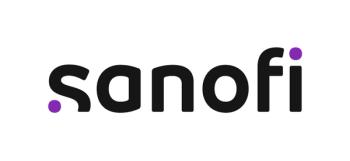
Tools for long-term learning
Contrary to popular opinion, possession of knowledge is not power. Utilization of knowledge is power.
Contrary to popular opinion, possession of knowledge is not power. Utilization of knowledge is power.
Stop and think about the training you regularly complete. If you were tested on the same material in three, six or 12 months, how well would you perform?
Long-term learning
The basics of learning are really basic. People learn some small amounts easier than large amounts. Lists are easier to learn if the items are related and not random. Material related to information we already know - "anchors" of existing knowledge - is easier to learn than unrelated information.
Consider the following basic learning methods:
Sheer repetition: Repeat exposure to new material. For example, go over new material again and again and again until you remember it.
Cue response: If new information that you are learning is interrelated in some way, you can link it together and find that remembering a few of the larger, more important pieces helps you remember the rest.
Active integration: If new material is strongly connected to information that you already know, you can link the new material to the old "anchors."
We all use a mixture of these methods when we learn. For example, certain facts might seem easy to remember after only one reading. This is because the information is linked strongly to an anchor that already exists in our long-term, readily recallable information banks. We are learning by way of active integration.
Consider another example: When we are trying to remember a list, we might "go blank" and need to look up the information. Exposure to one small piece of information might trigger recall of the rest of the material. This is an example of cue-response learning.
We have all used sheer repetition to drill in knowledge quickly. But it is the most inefficient way to learn. Never resort to it for large amounts of information. Use it to force in a big, central piece of information and then use this to anchor additional information for cue-response learning.
Tortoise or hare?
Breaking down learning into the following five steps takes more time than the basic "cram it in for the test, purge it later" approach, but assimilation is largely automatic, and you determine which information you acquire permanently. The little extra effort pays huge dividends in the long run.
You need three highlighters: light, medium and dark.
1. Using your light highlighter, read through your book or manual and highlight everything you feel you need to know for a test.
2. Take a break.
3. Go back through the material with your dark highlighter. Highlight only the absolutely critical information. In an average book, such as a CMR manual, you should only highlight three to five critical pieces of information per chapter. These will be your critical anchors.
4. Take a break.
5. Go back over the material with your medium highlighter. Skip from critical anchor to critical anchor. Under each anchor, highlight the most important three to five points associated with that anchor.
At this point, you will notice a fair amount of mastery of the material. The information that you have linked to existing anchors is on its way to being permanently integrated. The information linked to new anchors is readily available for a test and will become permanent if the anchors become permanent.
Information contained in tables and lists should be broken out separately. Only work at committing this information to memory if it is absolutely necessary for an exam. In the real world, you only need to find the resource to look up the information. A copy of a critical table in your sales binder or planner will save time and be more reliable than memory.
Permanent mastery
To permanently master information, generate an outline guide.
Go back though the highlighted book or manual.
Skip from anchor to anchor (the darkest highlighted items. ) Read the anchor and decide if the information is important to know and remember now or in the future. When you hit an anchor you want to retain, write it down, then evaluate the three to five key points associated with this anchor. If a point is important to retain, then write it down under the anchor. If you decide every critical anchor and key point is important, you will have 12 to 30 lines per chapter in your outline.
After you have finished, place the outline in a binder and keep the binder and related books and manuals together. Carry an outline in your sales binder or planner for a week and review it during wasted time, such as when you are waiting in offices, or on your lunch hour.
Carry a different outline each week or two. Soon, you will notice that you not only remember key points but you remember the anchors without looking them up in your outlines.
If you are presented with a new product, or are going to be retested on a specific manual, pull out the appropriate outline and manual. You know the critical anchors and associated key points. Use the outline and key points to guide your review of the book.
In training, companies provide you with the content. Now you have the tools to retain, integrate and utilize information encountered in training. PR
Newsletter
Lead with insight with the Pharmaceutical Executive newsletter, featuring strategic analysis, leadership trends, and market intelligence for biopharma decision-makers.




